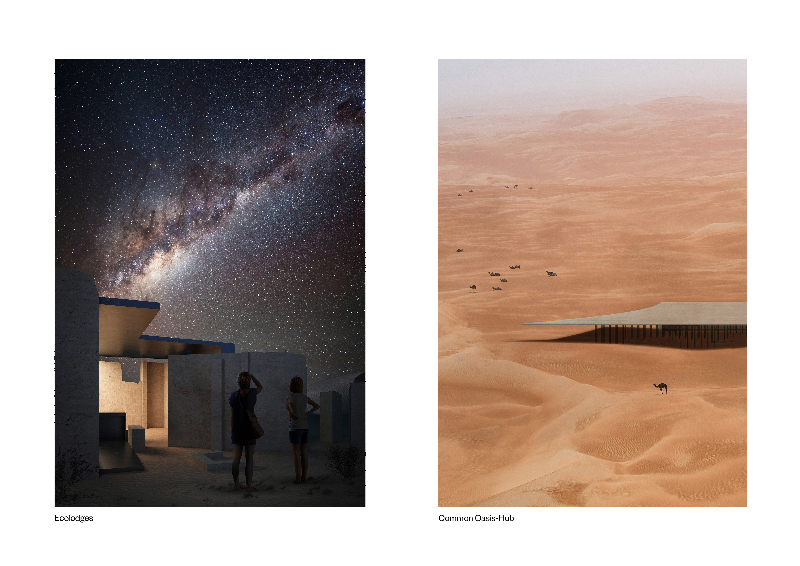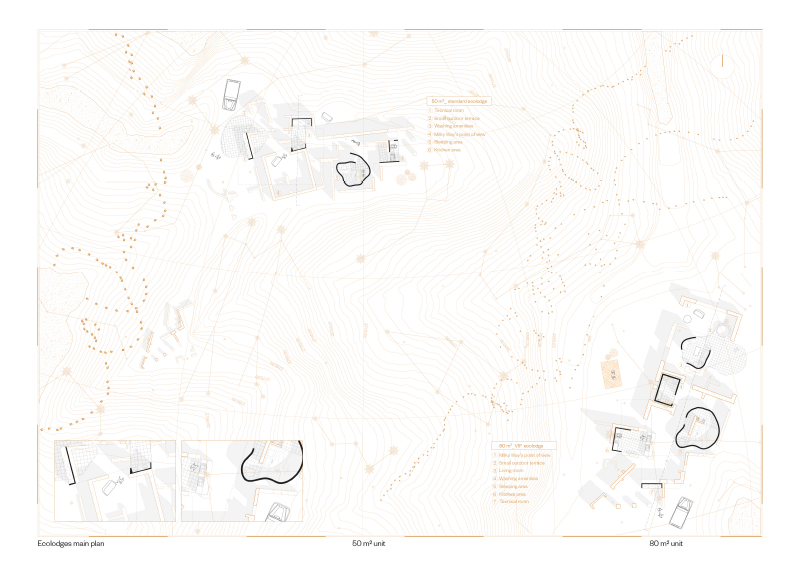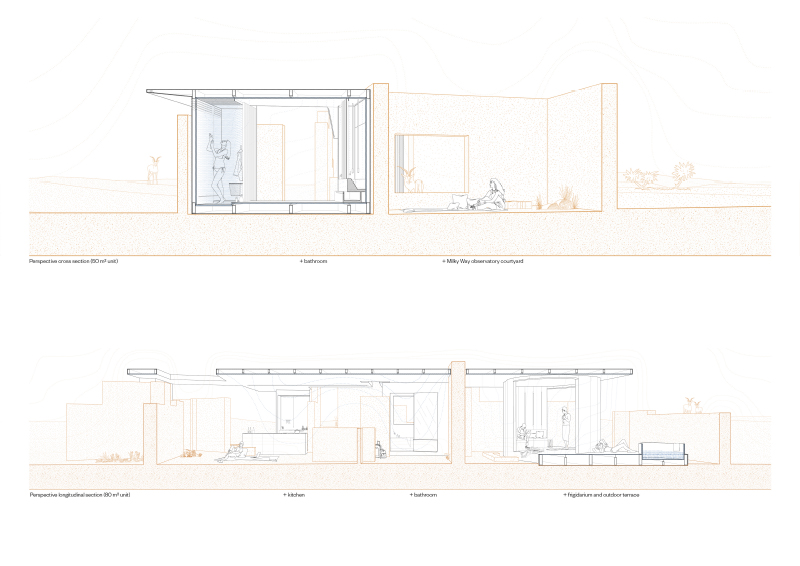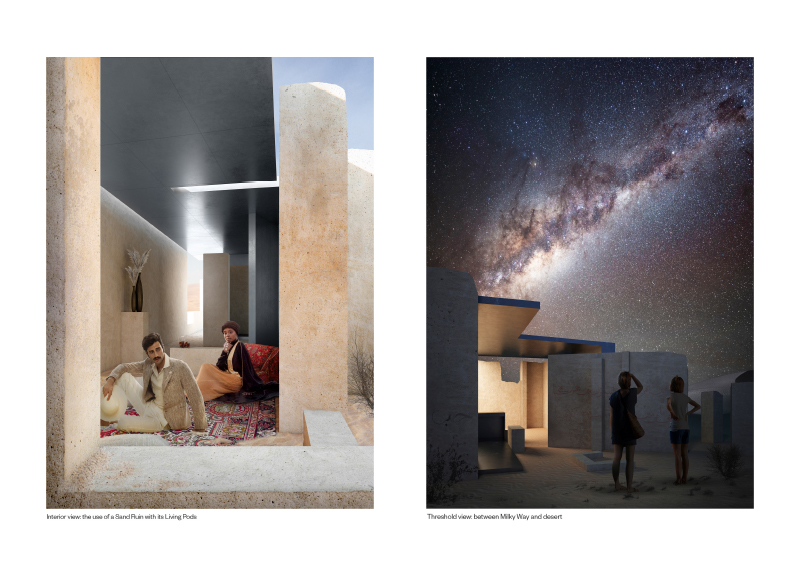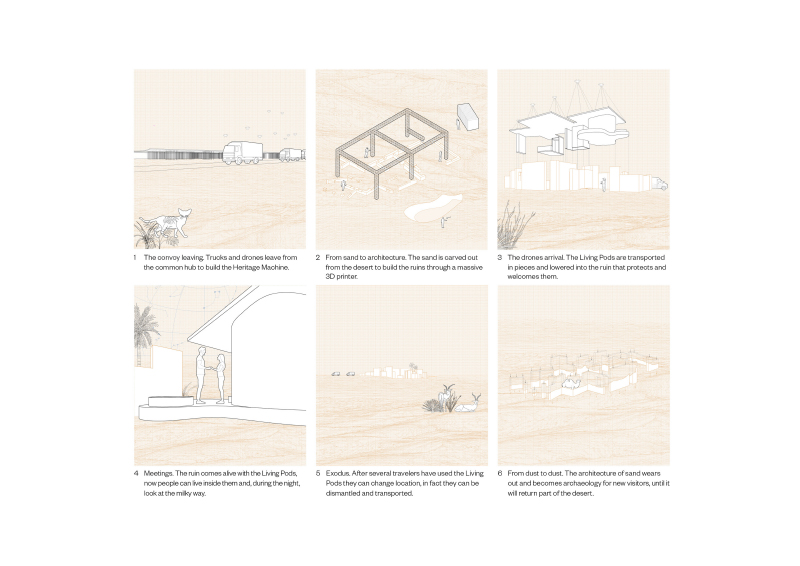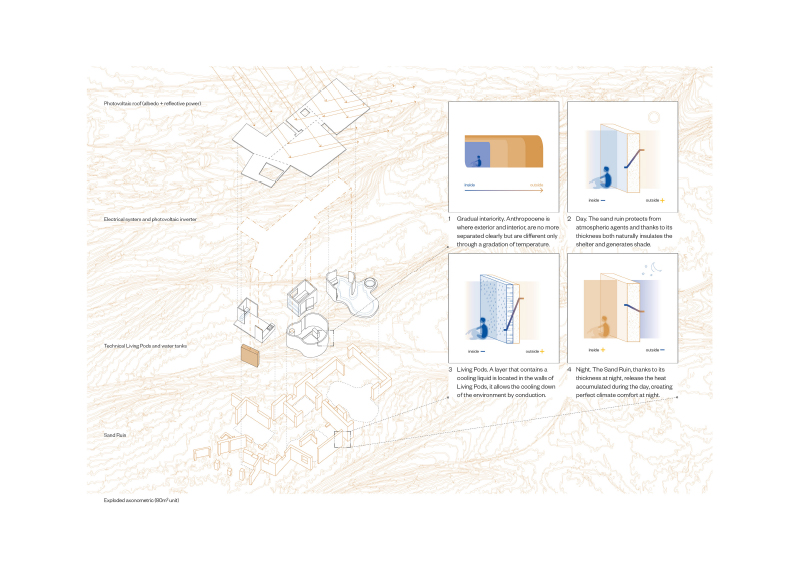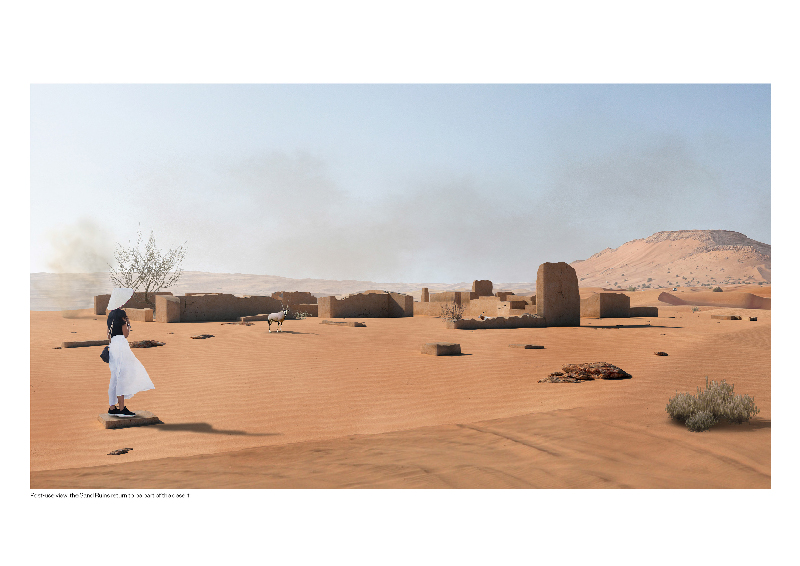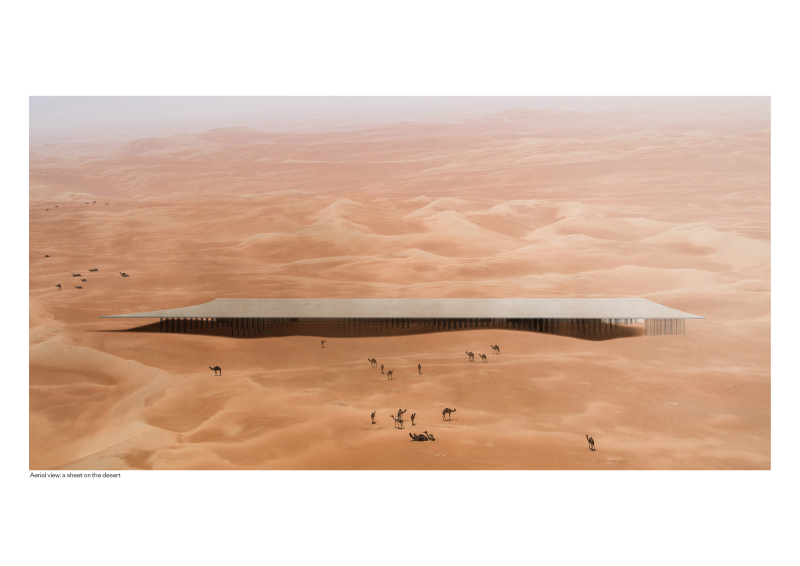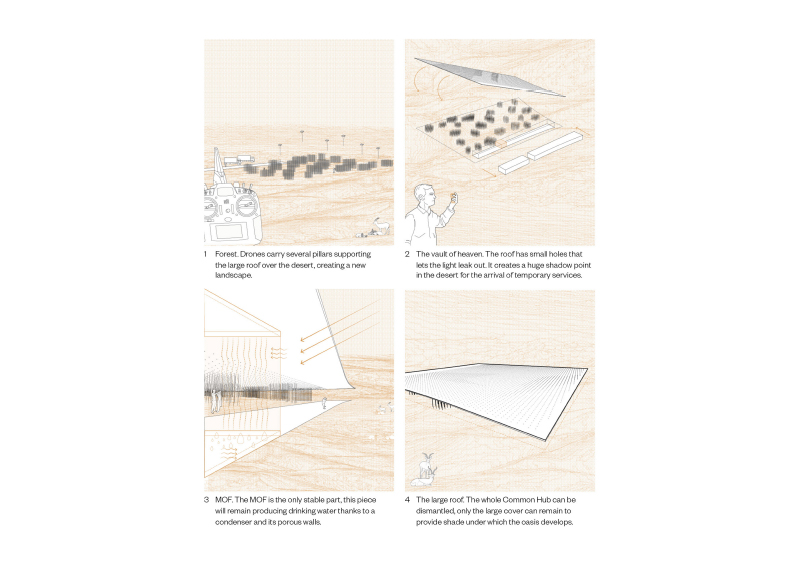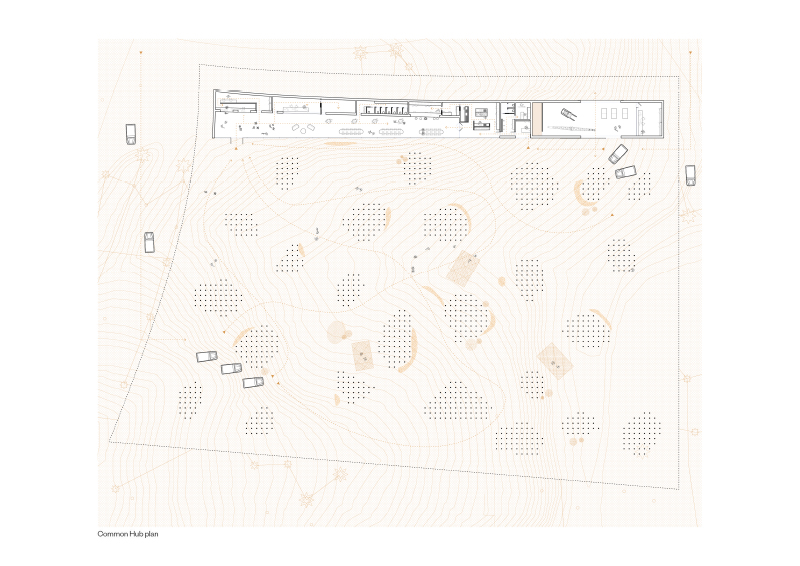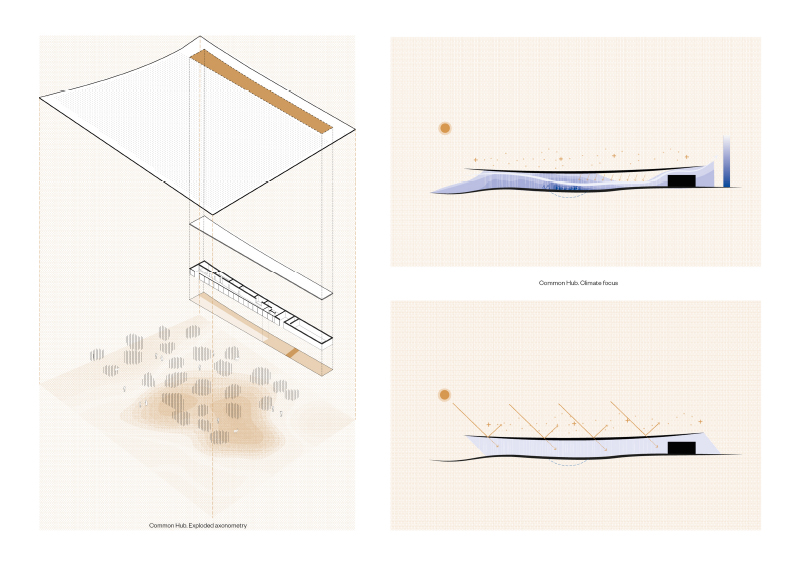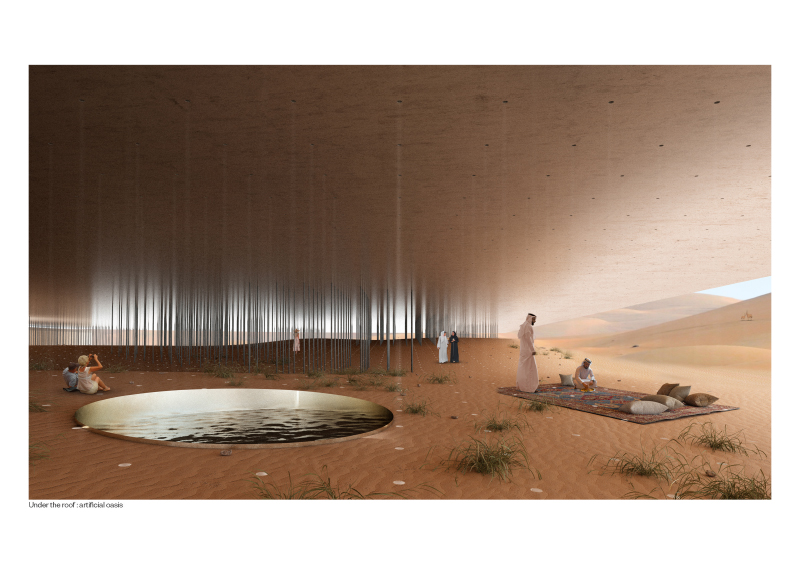Every desert carries within it the traces of the landscape that preceded the aridity: clearly engraved valleys, gorges and dunes are the legacy of wetter periods, the result of the continuous reshaping of the sands. These geographies deflected and corroded by the wind and by men, architects of sediments, are a material reality—this expands on a global scale, making itself a legacy and a challenge for future habitability. Designing in the desert may mean operating without context, but it is precisely in its transitory traces that new directions for the future of these areas must be sought. Context is something deeper than mere proximity, it is an increase in responsibility and a search for clues where paradoxically there are none. So we go back to looking at the footprints of the oryxes, the directions of the stars, the passage of the chariots, the action of the wind and our desire for memories, considering them as the matrix and system of the design exercise: the attempt to inhabit the desert through the construction of new polarities, new compasses (landmarks), other legacies.
Sand Ruins. Desert and history correspond in our discourse, so the sand, interpreted as an economic, energetic and cultural resource, is the constitutive material of a series of archaeologies that are disseminated in the context to direct the passage and to welcome life.
Starting from the shapeless matter, more certain configurations are printed in 3D—configurations that define the habitable environments and that, because of the exposure to the action of atmospheric agents and for the granulometric composition of the material (i.e.: WASP 3D printing; Finite Material), will deteriorate to become sand again. Nevertheless, these spaces are defined by very thick walls and great thermal inertia, ensuring protection and shielding, available to accommodate human and non-human life.
Living Pods. The archaeologies are complementary to more controlled, mobile and technically sophisticated environments that respond to another temporality and serve to ensure habitability. Living Pods translate resources and climatic conditions into comfort and constitute the spatial and energy infrastructure of the project. They consist of a series of autonomous cells equipped with a coverage that are aggregated to form a roof for the newly built archaeological sites. Once their stay is over, they can be disassembled and migrated to a new archaeology, regardless of the newly abandoned cradle which is instead left to its natural decay.
Common Hub. To conceive the desert a humid interval is necessary—an artificial oasis, essential to the refreshment and development of the transient community that will attend the shelters. At the scale of the desert there is a monumental cover that defines a large collective shaded area under which to prototype new sand archaeology. Here are concentrated common services, reversible and regenerable, which could cyclically disappear leaving only a new trace in the context, available to accommodate other stories.

